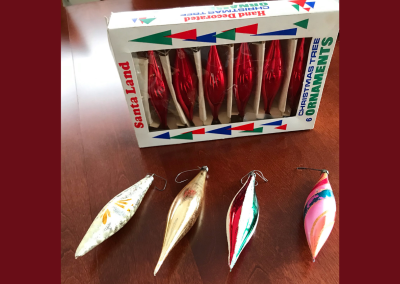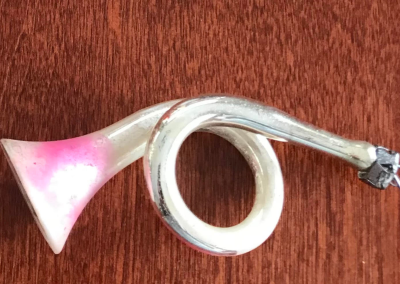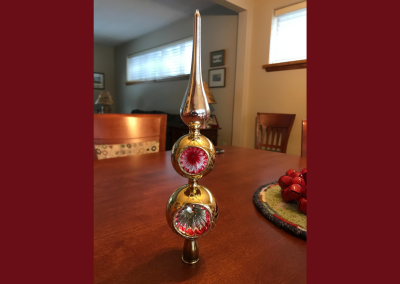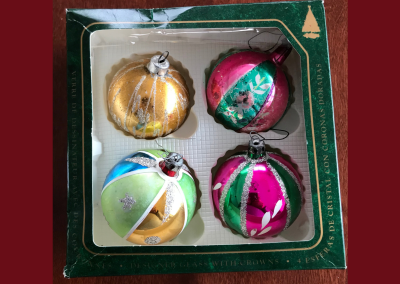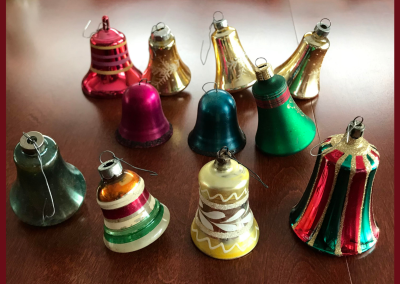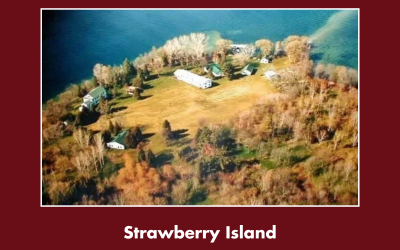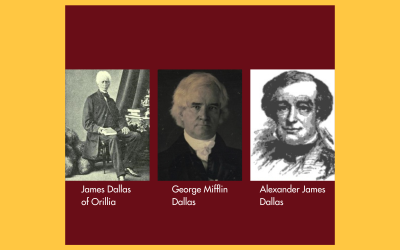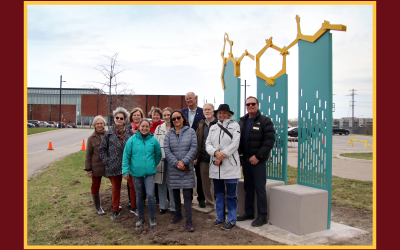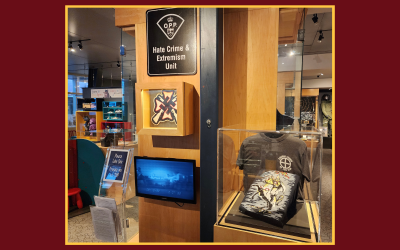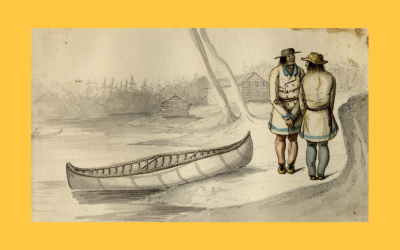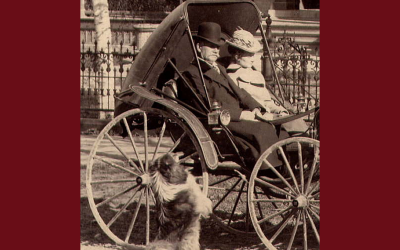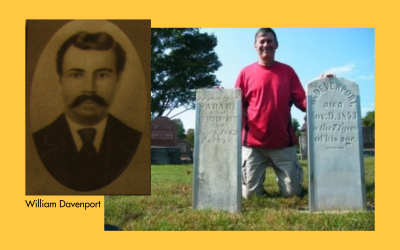Ornaments from Christmases Past
By Mary Ann Grant
Years ago, this writer became a collector of old-fashioned ornaments that fell out of favour with the advent of plastic. Whether antique, vintage or reproduction, they are precious for their beauty and unique design. They are not just the red and green colours associated with Christmas, but all the colours of the rainbow. These unique ornaments were purchased for pennies at antique stores, yard sales, estate sales and church bazaars in Orillia. They were used by our parents or grandparents, and evoke memories of long-ago days. They tell a story of bygone times.
Their Origin
The tradition of decorating a tree for Christmas originated in Germany. They used fruits and nuts to decorate trees that had shed their leaves to symbolize the spring that was to come. In the early 1600s the trees were brought inside and candles and paper roses were added.
In the 1800s German immigrants brought their tradition to North America and used whatever was available to them to decorate the trees, such as strings of popcorn and cranberries, candles and fruit.
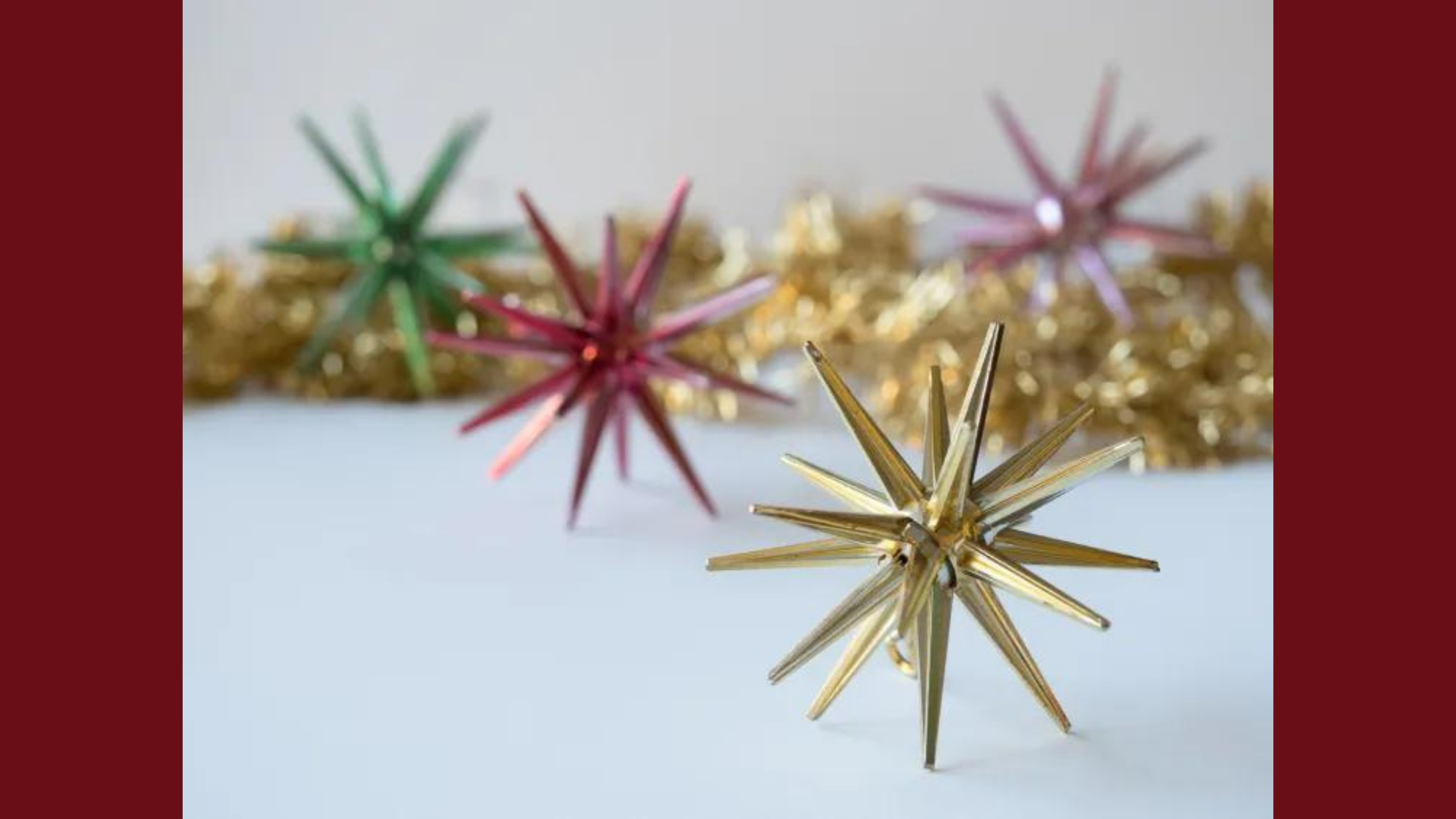
The glass ball ornament came to be and evolved into different shapes, bells, angels, fruit, musical instruments like horns, animals, trees, icicles and lanterns to name a few. Even an ornament modelled on the Russian ‘Sputnik’, the first artificial satellite to be launched into orbit by the Soviets on October 4, 1957, was created.
The origin of the ornaments can usually be found on their cap. This writer’s ornaments originated from the USA, Germany, Poland, Czechoslovakia and other countries. Some are made of metal; others are blown glass and bottle brush.
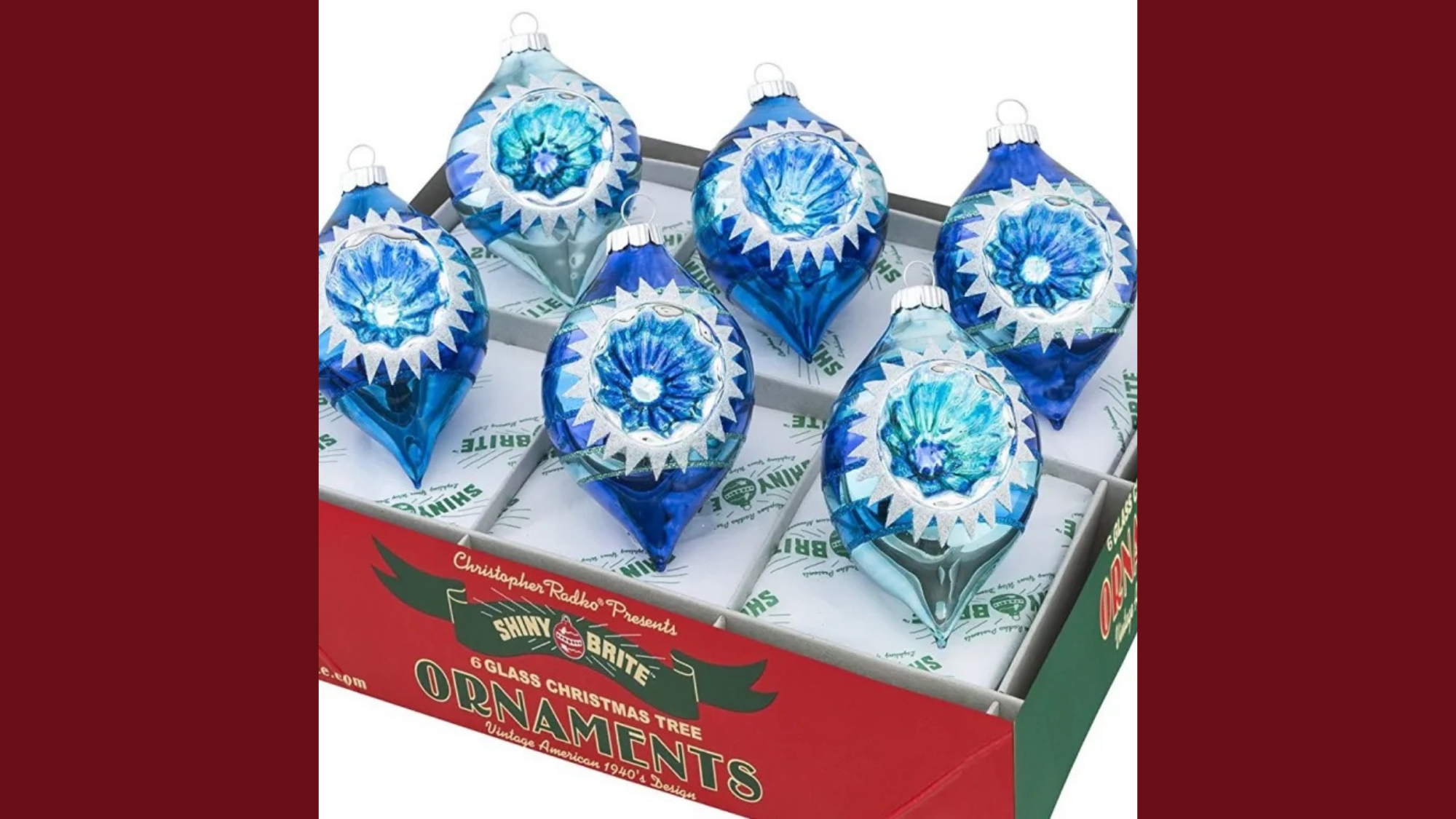
The invention of Shiny Brite Christmas ornaments in the United States came as a result of World War Two, which made it difficult to import ornaments. American businessman Max Eckart, who had been importing the ornaments from Germany since 1907, made a plan to avoid disruption in his business. He knew that glassblowers from many European countries were employed by Corning Glass and Corning held the patent for the glassblowing machine that was used for the manufacture of lightbulbs. Eckart convinced Corning to make a few alterations to the glassblowing machine to make ornaments. By 1940, Corning Glass was producing 300,000 ornaments per day. Most were sold to Eckart’s Shiny Brite company. Woolworths was a big distributor for the ornaments.
When metal paints and varnishes were in short supply because of the war effort, the balls were banded with slim lines in light shades. The glimmering tops normally made with metal were replaced with hangars made from folded cardboard. After the war the ornaments were again decorated with vibrant colours and metal caps were used again. With the ornaments falling out of favour, Shiny Brite ceased production.
The collection of the old ornaments has made a resurgence. In fact, Christopher Radko purchased the right to use the Shiny Brite name and in 2001 started making authentic looking reproductions of the ornaments.
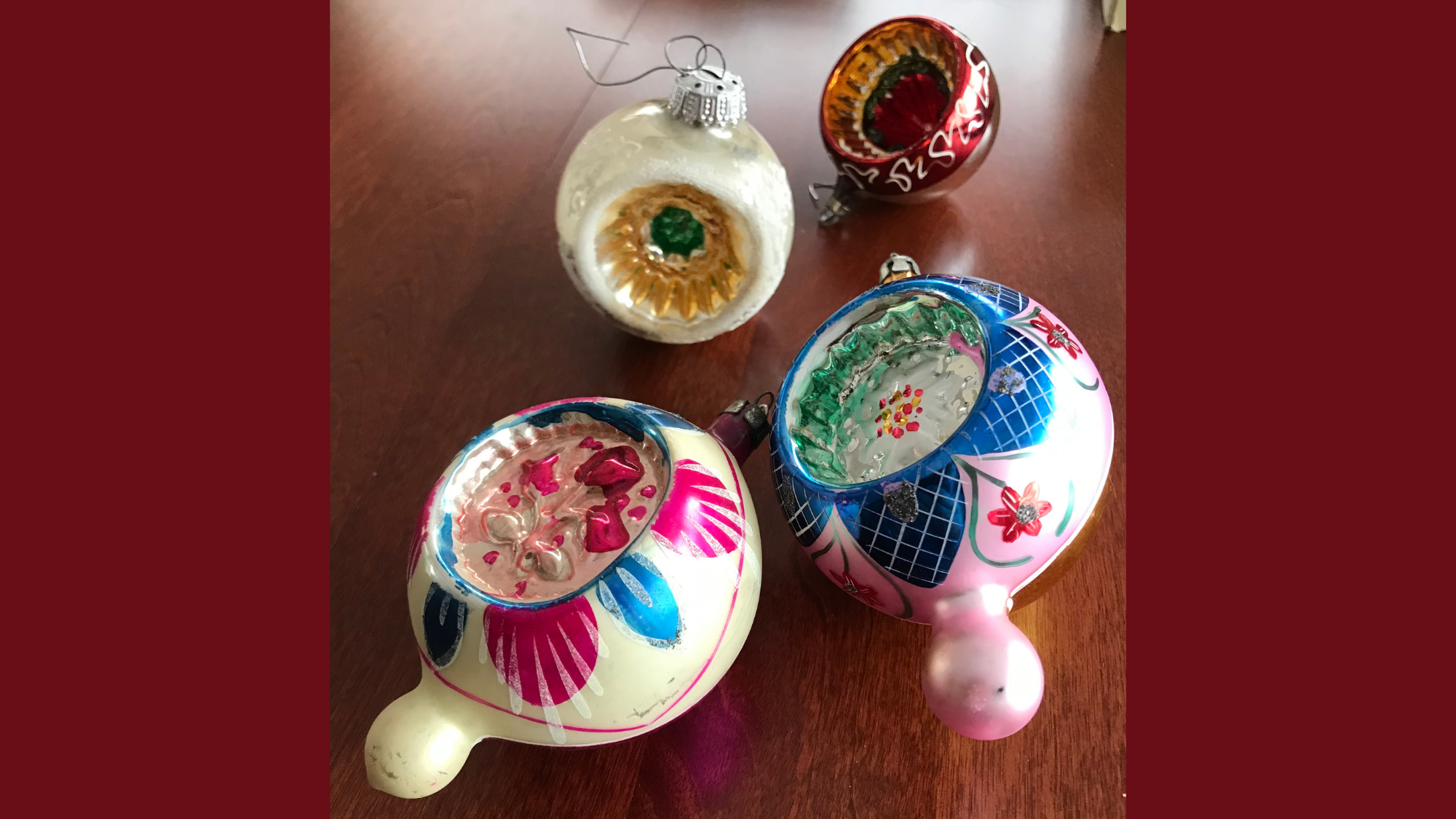
A Facebook group called The Golden Glow of Christmas Past is a forum for enthusiasts who are passionate about preserving and learning more about our Christmas history. Click on the HERE if you are interested in following this group.
It is wonderful that these pieces of beautifully designed ornaments are being preserved for future generations.
With Thanks to:
- Vintage Christmas Ornaments
- Christmas HQ – Christmas Ornaments, Their Origins, History and Meaning by Kathryn Mars
- Shiny Brite Ornaments: The History of a Holiday Classic
- CBC Vintage Christmas – Ornaments and How to Collect Them
- RUG HOOKING MAGAZINE – Vintage Ornaments Nov/Dec 2020
Mayor William Sword Frost
By History Committee members Bruce McRae and Mary Ann Grant Recently, our own City of Orillia was featured on the popular game show Jeopardy. What could we have done to garner such attention?CLUE: IN 1912 ORILLIA, ONTARIO WAS ONE OF THE FIRST TOWNS TO TRY THIS CHANGE....
A Tribute to Jean Sarjeant
by Mary Ann Grant, OMAH History CommitteeCredit - Special to the Orillia Packet and Times - Kate Grigg Jan 12, 2017 “Dad's Diary includes tales worth telling"The Orillia Museum of Art & History (OMAH) believes that it is important to acknowledge its supporters,...
The History of Strawberry Island, Lake Simcoe
By Fred Kallin, OMAH History Committee memberAnatari, Pa-Push-Quan, Gwillam’s Island, Lundy’s Island, Creighton Island, Anderson Island, Starvation Island: these are all previous names for a small 25-acre island in Lake Simcoe we now know as Strawberry Island. Few...
The Barons of Dallas
By Fred Blair, OMAH History Committee member and Family Historian In 1835, James Dallas and his family sailed from Scotland to New York City, travelled up the Erie Canal, and made their way to Orillia. In September he purchased 100 acres between Mississaga Street and...
City unveils its newest art commission: Crossroads, Connections and Intersections
The City’s Art in Public Places Committee along with Mayor Don McIsaac unveiled the sculpture “Endorphin” by artist Camille Rajotte on April 20, 2023. The sculpture is one of nine works being installed across the city over the next several months as part of the...
A Murder Plot and the Canadian Knights of the Ku Klux Klan
Currently on display at the OPP Museum, these items were seized by OPP members during investigations. The grey Canadian Knights of the Ku Klux Klan (KKK) t-shirt was seized as part of the 1982 investigation into forged passports that turned into a killer for hire....
CHIEF YELLOWHEAD’S JUSTICE IN 1832
Indians and Canoe at Coldwater River, 1844, Titus Hibbert Ware (Toronto Public Library)By Fred Blair, OMAH History Committee member and Family Historian This is a story of an accidental killing in 1832, an unsatisfactory trial verdict, and how Chief William Yellowhead...
THE TAITS OF ORILLIA
Andrew Tait, 1896. Photo from the Orillia Museum of Art & History Archives By William Leslie, Guest Contributor This is the story of the Tait family. William Tait, his wife, Mary and family left Scotland in 1848 for Canada, travelling from Liverpool to New York...
THE DAVENPORT BROTHERS
By Fred Blair, OMAH History Committee member and Family Historian About 1810, 20-year-old Benjamin Davenport, his younger brother William, and William’s wife Sarah arrived in Upper Canada (Ontario) as former Black slaves. William was born in Virginia about 1792 and...
THE ORILLIA WINTER CARNIVAL – A HISTORY
By P. (Trish) Crowe-Grande, Chair: OMAH History CommitteeWinter weather can bring short, bone-chilling days and long, dark nights with the sun setting much too early. For many of us, it can be challenging to find engaging activities that don’t involve bingeing an...

